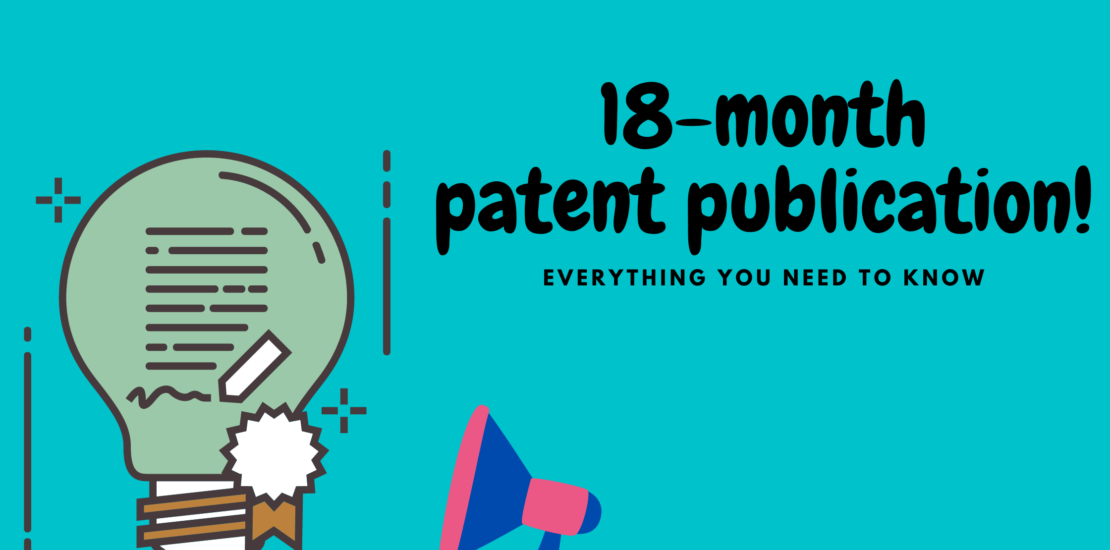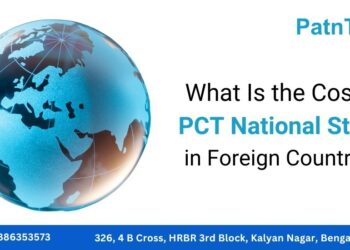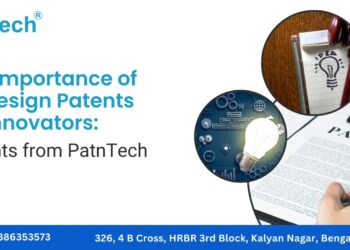Everything You Need to Know about 18 Month Patent Publication
- September 22, 2020
- Posted by: Patntech
- Categories: Blog, Patents


Everything you need to know about 18-month publication of patent applications
It is common knowledge that patent applications are generally published 18 months after the earliest priority date (including any claimed priority) of the patent application. Until after the expiry of the 18-month period from earliest priority date, the patent applications are confidential to the patent office and of course to the public. After publication, all communications between an applicant (or his agent) and the patent office are made available to the public. In other words, the publication of a patent application marks the date at which it is made publicly available. Though it is common knowledge that patent applications automatically get published after 18 months from the earliest priority date, not many people know how the provision came into existence in the world’s patent system. In this post, I will discuss how the provision or rule came into existence and advantages and disadvantages it provides to inventors, patent offices and competitors alike.
Origin of the 18-month patent publication provision
In most of the countries, patents were published upon grant and the applicant used to get the patent rights from the date of grant. In 1950’s, the number of patent applications filed before Patent offices across Europe increased significantly. This resulted in increase in backlog and delay in patent grants by the patent offices. Applicants too had to wait for a longer period of time to get the legal protection for their inventions. To mitigate the situation, Netherlands introduced mandatory 18-month publication of patent applications provision in 1964. Netherlands introduced the 18-month publication provision to provide an option to defer patent examination and to address the secrecy of pending patent applications before patent grant while also reducing the existing period of uncertainty. Denmark, Finland, Norway, and Sweden adopted the 18-month publication provision in the year 1968. Germany and France followed in the year 1969. Subsequently, when European countries agreed to sign European Patent Convention (EPC) in 1973, they included the 18-month publication provision in EPC.
In the early 1970’s, Japan saw an increase in the number of patent applications being filed in more complex technologies. This increased the average time taken to grant a patent to about five (5) years. To overcome the problem, Japan introduced 18-month publication provision in 1971.
The United States (US) patent office followed EPC and JPO and started publishing patent applications filed on or after November 29, 2000 eighteen (18) months after the effective filing date of the application. India followed all major patent offices and included the provision in the patent act.
Why 18-months, and not more or less?
Policy makers at the time considered that 18-months publication of the patent application provides a balance to protect applicant’s/inventor’s rights, provides sufficient time for competition and allows the patent office to assess the prior art and reduce backlog.
For the applicant/inventor, 18 months from the earliest priority date provides a reasonable period of time to assess whether they can continue prosecution of the patent application or to withdraw or abandon it.
For third parties including competitors, 18 months provides a reasonable period of time to wait to obtain information about a new technology. In addition, third parties can make informed decisions to continue pursuing a similar technology, or designing around the subject matter disclosed in the patent application. This provision provides a balance for the applicant and third parties and promotes more effective allocation of research and development investments and reduces time for processing the patent applications by the patent offices.
For patent offices, pending and published applications in addition to granted patents allow greater celerity in the assessment of prior art and patentability of subsequent patent applications.
How did 18-month publication provision impact the patent system?
Before the introduction of the 18-month publication provision, applicants used to get patent protection only from the date of grant. This mandated the applicant to collect damages for patent infringement from the date of grant. With introduction of 18-month publication provision, EPC allowed applicants to get provisional protection from the date of 18-month publication. The provisional protection allows the applicant to send notices or warning letters to potential infringers during the period between the time the patent application is published and the patent is granted.
Before the introduction of 18-month publication provision, patent examiners could only cite the granted patents as prior art for the patent applications they examined. With 18-month publication of patent applications, examiners could cite both pending (published) patent applications and/or granted patents for the purpose of assessing the prior art. This played an important role in determining novelty in the claims of patent applications.
In addition, many patent systems such as Europe, India and the US adopted pre-grant observation or pre-grant opposition provisions on the patentability of claims in a patent application. 18-month publication provides an opportunity for third parties to file observations on the patentability of the invention. This helps to draw the examiner’s attention to any relevant material and ensure that invalid patents are not granted. This greatly improves the efficiency of the examination process.
No publication of patent application automatically after 18-months from filing under certain circumstances
Under certain circumstances (provisions), patent application does not get published after 18 months from the earliest effective filing date. Patent offices across the world have different criteria.
Some of the common reasons are listed below. Applications are not published, if:
- Subject matter of patent applications invokes a secrecy direction, in India for example.
- Applicant fails to file a complete application within 12 months from the filing of the provisional application. This is applicable for many patent offices, US and India for example.
- Applicant withdraws the application 3 months prior to 18 months from filing date, in India for example.
- Applicant selects an “opt-out” option-allowing the application not to be published. This is applicable only in the US.
Can an applicant request for early publication of patent publication without having to wait for 18-month publication?
Yes. Applicants can file a request for early publication. I will discuss more on “early patent publication” in another post.
What are the advantages and disadvantages of 18-month publication provision?
Advantages:
- From the date of publication of the application, the subject-matter of the patent application becomes public and forms/becomes state of the art. This allows the competitors to make informed decisions in their research and business activities.
- An 18-month publication ensures an earlier filed co-pending application does not become a secret prior art when compared with the existing patent system where the granted patents only formed prior art. Although an application filed within 18 months prior may still become a secret prior art.
- 18-month publication provision provides provisional protection from the date of 18-month publication until the patent is granted.
- 18-month publication provision allows third parties to file pre-grant observations on the patentability of the invention.
Disadvantages:
- If the application fails to proceed to grant for any reasons, then this poses a problem for the applicant, as he has already disclosed his invention to the public, but received no rights in return.
- Pre-grant observations may delay the grant of a patent and provide an avenue for the competitors to abuse the patent system.
Author: Chandrasekhar Raju
AIPPI World Congress, Yokohama, Japan
We are pleased to share that PatnTech’s Managing Partner, Mr. Chandrasekhar Raju, attended the AIPPI World Congress held in Yokohama, Japan, from September 13–16, 2025.
October 1, 2025What Is the Cost of PCT National Stage in Foreign Countries?
The Patent Cooperation Treaty (PCT) simplifies patent protection for companies and inventors worldwide
August 6, 2025The Importance of US Design Patents for Innovators: Insights from PatnTech
In today’s competitive marketplace, innovation drives success, and protecting those innovations is crucial.
July 21, 2025How to Apply for a US Design Patent: Your Step-by-Step Guide
A US design patent protects the unique ornamental design of an article of manufacture. It helps businesses and inventors safeguard their innovative creations.
July 10, 2025




